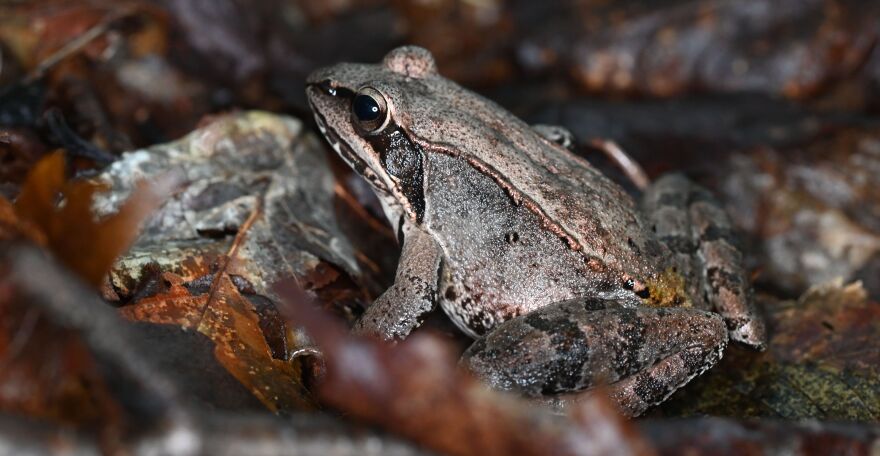It’s not the birds or the bees in this story. It’s actually frogs.
Wood frogs, it turns out, start their mating season early. Before ponds are fully thawed and trees bud, males gather in ponds, sometimes by the hundreds, to sing in large choruses to attract females.
The songs are, perhaps, not the gentle chorus you may be imagining.
It “sounds like a big group of turkeys, kind of frolicking in the woods,” said Ryan Calsbeek, a Dartmouth professor and evolutionary biologist who studies who gets to mate and why.
Unlike other species, where the male might have a “showy or flashy” mating signal in order to attract a mate, “females are actually listening to the chorus of groups of males singing together,” Calsbeek said.
The intensity of listening by the female frogs raised a question for Calsbeek and two other researchers. Were females interested in the characteristics of the chorus? Did they prefer lower pitches, higher pitches or a mix?
Deeper calls might suggest males of a larger body size, and a mix of calls might suggest a female wood frog could pick from a variety of males, according to Calsbeek. The researchers wanted to evaluate how individual frog calls might influence the probability of a female wood frog picking a pool to lay her eggs.
To pinpoint the individual songs, the group used an acoustic camera, which allowed them to map the frog sounds visually, resulting in a heat map that allowed researchers to see the intensity of the call and its location.
“The acoustic camera allows us to parse out the calls from individual males by selecting these little pixels from the video,” he says.
The group found that while female frogs aren’t necessarily tuning in to one particular frog, they’re generally attracted to lower frequency choruses and with little variation in pitch. Males tend to time their songs to follow those of other members in the chorus.
Traditionally, the view is that once a female frog arrives at a pond there’s a mad scramble among the male frogs to gain access.
“They just arrive at the pond and then it’s kind of in the male’s hands,” he said.
But Calsbeek says this research demonstrates females do have more control in selection than previously thought.
“They can listen to a variety of different chorus types and make decisions about the kinds of males that they might prefer to have as mates before they go to a particular pond.”








